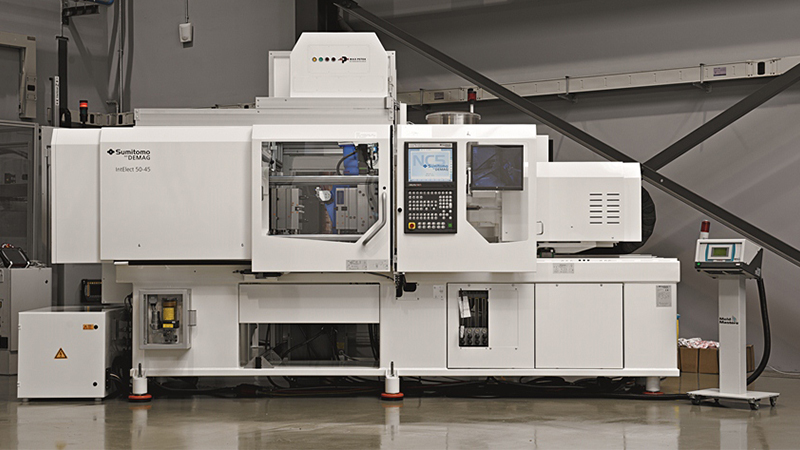The company’s activeCell system - a self-contained injection moulding cleanroom - achieves ISO Class 7 manufacturing performance, yet only requires approximately 13 square metres of floor space for the 160 version. “The space occupied by a fixed injection moulding cleanroom with air filtration system could measure anything from 32 to 50 square metres,” notes Nigel. “What’s more, they can be expensive to build and costly to operate and maintain.”
The moulder should have a clean-room zone
To achieve a clean production environment, the main focus must be on the end product, i.e. the formed parts must be protected from contamination, Nigel explains. “In practice, this means that the path of the formed parts out of the mould for packaging or further processing is critically reviewed. The moulder should have a clean-room zone which, with a minimum of expenditure for technical equipment, offers maximum protection from contamination in relation to the application.”
As a solution, Sumitomo (SHI) Demag engineered a fully configured injection moulding machine, which in itself is a full clean room cell, enclosing all the exposed points where a plastic component may come into contact with the environment. Designed to manufacture single or multi-components, activeCell is readily certified to ISO Class 7 (10,0000) requirements to comply with GAMP and FDA standards as well as DQ, IQ and OQ documentation.
The all-electric compact turnkey system is equipped with a platen mounted six-axis robot, laminar airflow cabinets for particle free air in the mould-space area and integral packaging equipment. Nigel puts this into context: “In effect, it means the parts produced never have to leave the cleanroom environment until they have been packed.”
He continues: “A self-contained unit like this offers a lower-investment entry into cleanroom manufacturing in what may otherwise be cost prohibitive. What’s more, it can actually maintain a higher output, as people don’t need to enter or leave the cleanroom, resulting in continuous, uninterrupted production.”

activeCell is a fully sealed system that challenges the traditional approach to cleanroom production
Available in 100, 160, 220 and 280 tonne formats, the compact fully guarded cell is only 500mm wider than a standard machine. Yet it incorporates all the required ancillaries. The cell features laminar air flow systems sourced from Max Petek. These flood the mould surface and part handling areas with HEPA filtered air. Once parts are moulded, a Motoman six-axis robot quickly and accurately transfers product to the conveyor system, chute or packaging system as required.
“Over and above its primary purpose, the six-axis robot offers secondary operations including assembly and palletising - giving added value for manufacturers seeking expansion options and faster pay back,” adds Nigel. The final element of the turnkey system is an AVT fully integrated packing system, which bags multiple products in the controlled conditions before they exit the machine.
“activeCell not only takes up less production space, it challenges the traditional approach to cleanroom production,” says Nigel.
It unites all the technology in one unit and by automating the entire process from moulding to packing, it helps to eliminate human contamination risks.”
Operating as a system integrator, Sumitomo (SHI) Demag oversees the entire project and installation, in addition to providing rapid response, post-sales service, customer support and spares from a single source. “The machine is built to specification and tested off site, with final certification completed on site as the results are unique to each manufacturing environment. This means a clean room system can be installed and certified in several days rather than weeks,” ends Nigel.
